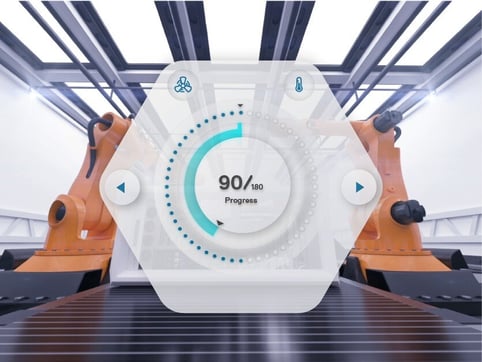Industry vs. Consumer
Different Demands on User Experience (UX) and User Interface (UI) – Our Focus
Smartphones, smartwatches, tablets – these devices have seamlessly integrated into our daily lives, gradually taking over tasks we once carried out on PCs or laptops. From mobile banking on a smartphone to navigation and communication through a smartwatch – smart devices are reshaping the way we interact with the world.
Even smart gadgets, textiles, and wearables like Microsoft’s HoloLens are expanding our access to data and possibilities, enriching not only everyday life but also industries like gaming. The pace of innovation in consumer electronics has been nothing short of phenomenal in recent years. Along with these changes, countless design trends have emerged – especially in the field of graphical user interfaces (GUIs).
But this raises the question: why haven’t these trends fully crossed over into the industrial world? Is it simply a matter of conservative industry thinking?
A closer look at the UX/UI demands in consumer versus industrial environments reveals a more complex answer. Industrial workspaces come with completely different tasks, priorities, and consequences. The motivation behind interacting with an interface is fundamentally different at work compared to personal use. Designing safe, effective interaction for both the operator and the machine means fully considering the working environment.

Safety, Data Security and Efficiency are top priorities in Industry
In industrial environments, the stable, fast, and clear communication of information is the foundation of any well-designed interface. Misinterpreting a single element in a control interface can not only damage valuable machinery – in the worst case, it can endanger human lives.
Additionally, the information displayed must adapt to the user’s role and level of responsibility. Operators at different experience levels or with varying tasks should be able to interact with machines efficiently and safely – tailored to their skills and the situation at hand. Unlike consumer apps, where users often interact anonymously, industrial applications require user authentication. This ensures that only relevant controls are accessible, which also significantly reduces the risk of operator error.
Design Language and Color choices matter
Industrial production equipment represents a major investment. The user interface should reflect this – offering not just aesthetic appeal, but a timeless, sustainable design that withstands years of use.
Color selection, especially, plays a critical role. In industrial design, colors are often standardized for specific meanings. Red, for example, is universally recognized as a warning color. While in consumer apps – like the Austrian Railways mobile app – red may be used freely as a stylish brand color, in industrial settings it signals urgency and should be reserved exclusively for alerts and warnings to ensure clear communication in critical situations.
At Alphagate, we actively track the latest trends in UX and UI design, carefully evaluating their potential and relevance for the specific needs of different industrial sectors. When we identify genuine added value, we integrate these insights into our concepts and design thinking – to ensure machine operation remains future-proof and human-centered.
In line with our Motto: Secure the future – with human ready.
Roswitha-Schneider%20Large.jpeg?width=300&name=916A4318(c)Roswitha-Schneider%20Large.jpeg)
